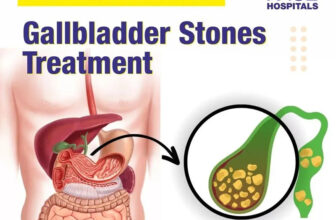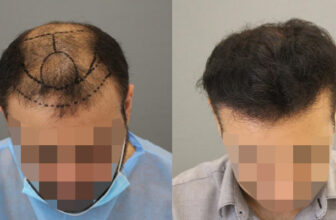
Actinic keratosis (AK) is a skin condition that results from prolonged sun exposure. These rough, scaly patches can appear on the skin, especially on areas frequently exposed to the sun, such as the face, hands, and neck. While treatment for actinic keratosis is important to prevent it from progressing into skin cancer, many individuals are seeking non-invasive options for managing the condition. Fortunately, there are several effective non-invasive treatments available in Dubai that can help treat actinic keratosis treratment (لعلاج التقرن الشعاعي )with minimal downtime and discomfort. In this article, we will explore the top non-invasive actinic keratosis treatments and how they can benefit you.
What Is Actinic Keratosis?
Actinic keratosis is a precancerous skin condition that often develops in individuals with fair skin who have had excessive sun exposure. It manifests as dry, scaly, or crusty patches of skin, and though it is not cancerous initially, it can lead to squamous cell carcinoma if not treated promptly. Therefore, early intervention is crucial for minimizing the risks associated with this condition.
The Importance of Non-Invasive Treatments for Actinic Keratosis:
Non-invasive treatments are appealing because they are generally quicker, less painful, and have shorter recovery times compared to surgical methods. Additionally, many non-invasive treatments can be performed in a single session, allowing individuals to return to their daily routines immediately. These treatments are especially popular among those who want to avoid scarring and lengthy recovery periods while still effectively managing their actinic keratosis.
Non-Invasive Actinic Keratosis Treatments in Dubai:
There are several non-invasive options available for treating actinic keratosis, each with its unique benefits and considerations. Below are some of the most common and effective non-invasive treatments.
Cryotherapy (Freezing Treatment)
Cryotherapy is one of the most commonly used non-invasive treatments for actinic keratosis. It involves the application of liquid nitrogen to freeze the affected skin areas, causing the abnormal cells to die. This treatment is fast and generally well-tolerated, with minimal discomfort during the procedure.
How Long Does Cryotherapy Take to Show Results?
After cryotherapy, the treated areas typically form blisters or scabs, which will fall off within 7 to 14 days. Most individuals will see improvement within 2 to 4 weeks after the treatment. Cryotherapy is especially effective for smaller or isolated actinic keratosis lesions and can often provide long-lasting results.
Photodynamic Therapy (PDT):
Photodynamic therapy is a non-invasive treatment that involves the application of a photosensitizing agent to the skin. Once applied, the area is exposed to a special light that activates the agent, destroying abnormal cells in the process. This therapy is often recommended for multiple actinic keratosis lesions or for individuals with larger areas of affected skin.
How Effective Is Photodynamic Therapy?
Photodynamic therapy can effectively treat actinic keratosis, with most individuals seeing noticeable improvements within 2 to 4 weeks. Although some redness, swelling, or peeling may occur in the treated area, these side effects typically subside within a few days to a week. PDT is a safe and effective option for individuals seeking a non-invasive method to address multiple AK lesions.
Topical Treatments:
Topical treatments are another popular non-invasive option for managing actinic keratosis. These treatments typically involve applying a cream or ointment directly to the affected areas. Two of the most commonly prescribed topical treatments are fluorouracil (5-FU) and imiquimod.
Fluorouracil (5-FU):
Fluorouracil is a chemotherapy medication that works by inhibiting the growth of abnormal skin cells, causing them to eventually die off. It is applied directly to the affected area over a period of several weeks. Although it may cause some irritation, redness, or peeling, the treatment is highly effective in clearing actinic keratosis lesions. Results can typically be seen within 2 to 4 weeks, with the skin continuing to improve over the next several weeks.
Imiquimod (Aldara):
Imiquimod is a topical treatment that works by stimulating the immune system to target and destroy abnormal cells. Like fluorouracil, it is applied to the affected areas, typically over several weeks. Imiquimod may cause redness, irritation, or a burning sensation at the treatment site, but these side effects usually subside over time. Results from imiquimod can take around 4 to 6 weeks to become visible.
Laser Therapy:
Laser therapy uses focused light energy to treat actinic keratosis. The laser targets the abnormal cells in the affected areas, removing them while leaving the surrounding skin undamaged. This method is particularly effective for larger areas of sun damage and can provide precise treatment without the need for incisions or stitches.
Laser Therapy Results:
Laser therapy typically requires little to no downtime, and most individuals can return to their normal activities immediately after the procedure. Results are typically visible within 2 to 4 weeks after the treatment, and the treated area may appear slightly red or swollen for a few days. Laser therapy is often used for patients with multiple lesions or those seeking a comprehensive treatment option.
Conclusion:
Non-invasive treatments for keratosis treratment (لعلاج التقرن الشعاعي )offer an effective way to address this skin condition without the need for surgery. Whether through cryotherapy, photodynamic therapy, topical medications, or laser therapy, these treatments can help individuals manage their actinic keratosis and prevent further skin damage. The best treatment for you will depend on the severity of your condition, the number of lesions, and your skin type.
In Dubai, there are many options available for non-invasive actinic keratosis treatment, ensuring that you can find the solution that best meets your needs. Early detection and treatment are key to managing actinic keratosis effectively, so be sure to monitor your skin regularly and seek treatment as soon as possible to prevent complications.







